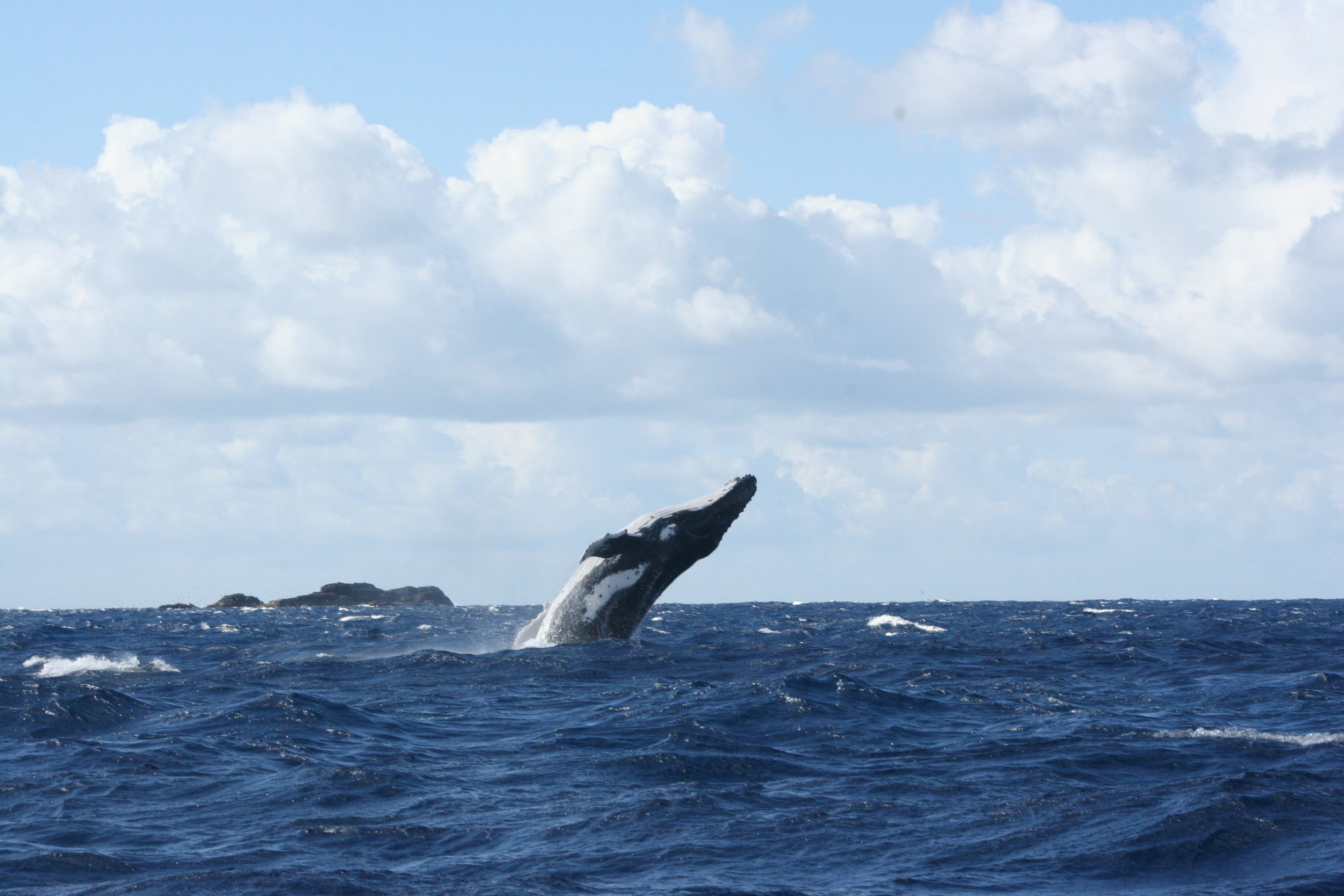Using satellite tracking, Leena Riekkola has shown that humpback whales do not necessarily end their annual migration in the same place.
Illustration by Leigh Douglas
Ethograms is a monthly column published in collaboration with the Australasian Society for the Study of Animal Behaviour (ASSAB), showcasing the work of early-career researchers. Andrew Katsis is a PhD candidate at Deakin University, and an outreach officer for ASSAB.
Growing up, Leena Riekkola wasn’t particularly interested in humpback whales. She had seen whales in nature documentaries, of course, and found them charismatic creatures, but she never sought them out as a study subject. When she chose her PhD project, she was “mainly interested in the spatial ecology side of it, and humpback whales just happened to be the study species.”
Now a third-year PhD candidate at the University of Auckland, Riekkola is using satellite tracking to make sense of the humpback whale's annual migration. For the Oceania humpbacks, one of several subpopulations recognised worldwide, this journey begins at various tropical islands in the Pacific, from New Caledonia to French Polynesia. On their journey south, the whales pass by the Kermadec Islands, a mostly uninhabited archipelago 1000km north of New Zealand.
Riekkola has visited this archipelago herself. In 2016, she joined a field trip to photograph and biopsy humpbacks, working on a boat that floated alongside the whales as they surfaced. Being in such proximity to these animals, which can reach 16 metres in length, is something she won’t forget in any hurry. “We would get a few metres away from them and it was definitely a very exciting experience, for sure,” she says. “Especially the first few times, you have a little giggle inside your head. And then, at some point, it’s just like anything; it becomes a job.”
Leena Riekkola is satellite tracking humpback whales during their annual migration. © Guillaume Chero
A year earlier, in 2015, marine mammal ecologist Rochelle Constantine, from the University of Auckland, led another expedition to the Kermadec Islands, during which satellite tags were attached to several dozen whales. Deploying these tags is very much a hands-on process: When a whale surfaces near the boat, one researcher fires a tracking tag using a pneumatic air gun. This tag lodges into the whale’s body, nestled between the blubber and tissue, and regularly connects with orbiting satellites to update its position in the ocean. But this technology, while advanced, is by no means foolproof.
“You put the tags in a whale, and you really have no idea what you’re going to get, how long you’re going to get data for,” says Riekkola. “It could be a couple of days, like in some of the cases, or it could be eight months. So it’s very unpredictable what you are going to get, if you’re going to get anything at all.”
In total, about three-quarters of the deployed trackers provided data with which Riekkola could chart the whales' movements. Through her analysis, she showed that migrating humpbacks move at about three to four kilometres per hour. Their migration path — which travels south through waters off New Zealand’s east coast, and then onwards to Antarctica — can take as few as six weeks, but there is plenty of individual variation. Close to their destination, the whales’ paths start to diverge in a surprising way.
“We noticed a bit of a split to the feeding grounds, and it may be linked to life history stage,” says Riekkola. “Mothers and calves ended up around the Ross Sea area, and most adults without calves around the Amundsen and Bellingshausen Seas area, which is further east.”



Historical whaling records seem to support Riekkola's main finding. Taken together, these data may help researchers piece together how much damage was done to the population by decades of whaling, and consequently how long it might take to mend. This could, in turn, solve a very pressing conservation mystery: why the Oceania humpbacks are not recovering as well as other humpback populations.
Across most of the world, humpback whales have been a conservation success story. The species, widely targeted by commercial whalers in the first half of the 20th century, was protected by the International Whaling Commission in 1966. Since then, the species has undergone a steady recovery, and humpbacks as a species are no longer considered threatened. Even so, the Oceania subpopulation is still listed as Endangered on the IUCN Red List, with an estimated 4,300 individuals in 2005. Even decades after whaling came to an end, this population has not recovered as well as other populations, perhaps due to indiscriminate illegal whaling by the Soviet Union between 1947 and the early 1970s.
Understanding how whales use their time in Antarctica could hold a crucial piece in this puzzle. For the next stage of her project, Riekkola is using tracking data to chart the whales’ movements within Antarctic waters. As the ice edge retreats over summer, there is a boom in the productivity of krill, tiny crustaceans that form the bulk of a humpback’s diet. Riekkola wants to know how closely whales follow the receding ice throughout the summer season, and whether whales in each of these feeding grounds behave differently.
“As the populations are recovering,” says Riekkola, “people have been trying to understand how whaling affected different populations. People probably assumed that mums, calves, and adults were distributed quite evenly, but maybe that’s not the case.”
































































